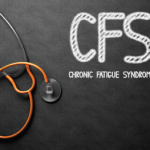 Physicians acknowledge that it can be difficult to diagnose chronic fatigue syndrome/myalgic encephalomyelitis (CFS/ME). No universally accepted method of diagnosis exists, and the disorder can present in many different ways.
Physicians acknowledge that it can be difficult to diagnose chronic fatigue syndrome/myalgic encephalomyelitis (CFS/ME). No universally accepted method of diagnosis exists, and the disorder can present in many different ways.
One school of thought posits that CFS/ME is primarily a disorder of lymphatic drainage of the central nervous system. With that in consideration, practitioners in the U.K. developed the Perrin technique, which diagnoses and treats CFS/ME based on a series of physical signs. New research supports the idea that these physical signs may accurately identify patients with CFS/ME.
Lucy Hives, research assistant at the University of Central Lancashire in the U.K., and colleagues found that a diagnosis of CFS/ME by physical assessment was consistent with a diagnosis by more established techniques. Their results, published in the Nov. 13, 2017, of BMJ Open, suggest that only two physical signs are needed to diagnose CFS/ME: tender coeliac plexus and postural/mechanical disturbance of the thoracic spine.
The small single-center study included 94 individuals who were 18–60 years old. The study included both people with a prior diagnosis of CFS/ME (n=52) and healthy controls with no symptoms of CFS/ME (n=42). Patients with CFS/ME had previously been formally diagnosed at a National Health Service hospital specialized clinic. The investigators did not collect data on the severity of symptoms of CFS/ME in these patients, nor on how long the patients had had CFS/ME.
In the study, three types of practitioners were tasked with diagnosing CFS/ME: an allied health professional with expertise in the Perrin technique, an allied health professional newly trained in the Perrin technique and a physician. Allied health professionals diagnosed CFS/ME using five signs: postural/mechanical disturbances of the thoracic spine, breast varicosities, tender Perrin’s point, tender coeliac plexus and dampened cranial flow.
The investigators found that allied health professionals who were experienced in the use of the Perrin technique were more accurate in diagnosing CFS/ME (88%) than were allied health professionals who were newly trained in the Perrin technique (69%). Experienced allied health professionals successfully identified healthy controls 83% of the time, and inexperienced allied health professionals successfully identified healthy controls 86% of the time. The authors conclude that, although both types of allied health professionals used the same technique, the newly trained allied health professionals struggled more frequently in the identification of all five physical signs.
The physician had more trouble diagnosing CFS/ME than did the allied health professionals, diagnosing CFS/ME in only 63% of participants with confirmed CFS/ME when using standard clinical neurological and rheumatological examination. From this finding, the authors conclude that the clinical neurological and rheumatological assessment had poor diagnostic utility relative to the Perrin technique.


